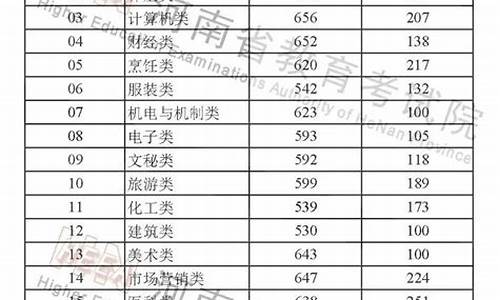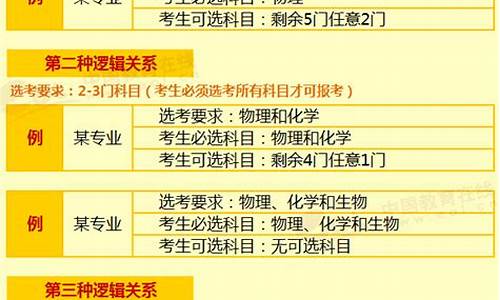您现在的位置是: 首页 > 教育政策 教育政策
高考英语改错技巧及方法,高考英语改错讲解
tamoadmin 2024-05-15 人已围观
简介老师叮咛:李辉老师说,英语学习的陷阱之一,就是“多做题”。很多人一想到学英语就想到“多做题”,但是做了很久都没提分,原因何在?事实上,每道题目都背后都有其“方法”和“考点”。下面的短文改错常见错误考点类型“很重要”!经过了全网首席高考英语名师李辉老师团队高度认真地整理校对,无错、可信!可供全国各省高中生打印、学习、背诵!一、动词 ①时态错误(过去时/现在时) eg:? ?1.Some p

老师叮咛:李辉老师说,英语学习的陷阱之一,就是“多做题”。很多人一想到学英语就想到“多做题”,但是做了很久都没提分,原因何在?事实上,每道题目都背后都有其“方法”和“考点”。下面的短文改错常见错误考点类型“很重要”!经过了全网首席高考英语名师李辉老师团队高度认真地整理校对,无错、可信!可供全国各省高中生打印、学习、背诵!
一、动词
①时态错误(过去时/现在时)
eg:?
?1.Some people even have(had)?to wait outside.
解析:have?→ had
?2.I thought(think)?I would be happy there.
解析:thought?→ think
②语态错误(主动/被动)
注意:先翻译句子,后观察该词在句中是主动/被动。
eg: Every day he makes sure that fresh vegetables or high quality oil are using for cooking.
每天,他都要确保新鲜蔬菜或高质量的油用于烹饪。
解析:using → used,根据句意此处表示被动含义,be used for“被用来去做”。
③主谓不一致
(1)前文所提的主语与后文所述的谓语不一致
eg: 1.The teacher were angry because we had the same answers in the tests.
解析:were → was,The teacher是单数形式,谓语动词用单数形式。
2.The rest of the trees was cut down.
解析:was → were,rest指的是可数名词的复数形式,谓语动词用复数形式。
(2)集体名词,谓语动词用复数。如:people, cattle, group, family, government, team, police等。
eg: The police is coming this way. ?
解析:is → are,The police是集体名词,故is → are。
(3)就近原则
常见:neither...nor... / not only...but... / either...or... / not...but...
eg: 1.Not only his parents but also he are crazy about the foreign films. ?
解析:are → is,该处谓语最近的主语为he是第三人称单数,故谓语动词用第三人称单数形式。
2.Because of too much homework,neither you nor James go to the cinema to enjoy the fantastic movie named Ready Player One.
解析:go → goes,该处谓语最近的主语为James是第三人称单数,故谓语用第三人称单数形式。
(4)There be句型
eg: There has a big library in our school.
解析:has → is,某地有某物,表存在用there be句型,且后面跟的是a big library单数。
(5)就远原则
常见:except / with / together with / along with / as well as / including
eg: I as well as he is happy.
解析:is → am,该处谓语最远的主语为I是第一人称,故谓语动词用第一人称am。
(6)缺少谓语动词(尤其缺be动词)
eg: 1.Secondly, I always practice?pronunciation and reading and speaking.
解析:Practice → practise,practice的词性是名词,该句中没有与主语I相适应的谓语动词形式故把practice→ practise(practise的词性是动词)则是在句中添加了一个谓语动词。
?2.She very beautiful. ?
解析:在She后加is,补齐主谓宾。
④非谓语错用
(1)谓语动词与非谓语动词区分不清
eg: There are thousands of examples tell us:if we want to succeed,we
?need a correct direction.
解析:tell → telling,there be 句型表示存在,是一个完整的句型结构,be动词就是谓语动词,所以句中若出现了其他动词,可以采用非谓语动词形式,因此动词tell不能直接使用原形,而且由于examples 和tell之间是主谓关系,所以要用tell的现在分词形式。
(2)V-ing和V-ed混用
eg: We were exciting to hear the news.
解析:exciting →excited,exciting修饰物,而excited修饰人。
(3)to的多用、少用或误用
eg: 1.When I finally arrived at my friend’s he lent to me lots of clothes.
解析:删除to,由lend sb. sth.(借给某人某物)可知,不用to,但如果将sth.放到前面,则用to。
?2.This thing belongs me. ?
解析:在belongs后加to,表示属于。
?3.He was tall,with board shoulders and a beard that turned form black towards gray over the years. ?
解析:towards → to,form ...towards...“从...走向...”,form...to...“从...到...”,根据句意towards → to。
⑤虚拟语气误用
eg: Then?he?and?my?mother?would?have?had?a?drink?while?she?prepared?dinner ?and?they?would?talk?about?his?day?and?hers.
解析:去掉had,句意:他和我妈妈会喝些东西。这里不是虚拟语气,不能用would have done,用would do表示“过去常常做”。
二、名词
①缺主/宾语,补名词/代词
eg: I wanted to reward the old woman for the trouble I had caused.But she refused.
解析:在caused后加her,缺少宾语。
②that/those(表示跟上文同类事物比较)
?eg: My books are more difficult?than of Jerry’s.
解析:在than后加those,缺少代词,代指books。
③反身代词
?eg: Tom felt that he knew everybody’s business better than they knew it them.
解析:them → themselves,主语是他们,宾语也是他们,宾语的他们用themselves。
④名词前加限定词(冠词,形容词性物主代词,指示代词)
如:a / an / the / my / your / his / her / their / this / that / there / these
?eg:?
1.An American and a Frenchman decided to cross the sea between
France and England in the balloon in 1784.
解析:the → a,此处指乘坐一个气球横过海洋,第一次提到用a。
2.I wanted to reward the old woman for the trouble I had caused hers.But she refused.
解析:hers → her,此处为宾语,后无名词,故选用形容词性物主代词。
⑤单复数形式
常见不可数名词:advice / information / fun / equipment / news / furniture / baggage / luggage /
traffic / knowledge / homework / progress / work / paper / food / change / water / joy / hair
常见单复数同形名词:sheep / fish / Chinese / cattle / bison / deer / people / clothes
?eg: As for most of us, we missed many chance to earn more money, to get a high position and to realize our dreams.
解析:chance → chances,many后用复数。
三、形容词/副词
①修饰名词或作表语,用形容词。
eg:It?was?both?excited?and?frightening?to?be?up?there!
解析:excited → exciting,主语是形式主语it,真正的主语是to be up there,
主语是物的时候,表语应该用现在分词形式的形容词。
②提示词是形容词,常变副词。
eg: 1.He must be mental disabled. ?
解析:mental → mentally
?2.When?I?was?a?very?young?children,my?father?created?a?regular practice?I?remember?well?years?late.
解析:late → later
③比较级/最高级
eg:1.As for most of us, we missed many chance to earn more money, to get a high position and to realize our dreams.
解析:high → higher,翻译为更高的位置。
2.They were also the best and worse years in my life .
解析:worse?→ worst,并列结构。
四、句子结构题
①介词+名词
eg:The only reason a man would sell salt a lower price would be because
?he was desperate for money. ?
解析:在salt后加at。
②it作形式主语
It + is +adj. +...(that从句/ to do)这件事儿是什么样子的(什么事儿呢).....
eg:It took years of work reduce the industrial pollution and clean the water. ?
解析:在work后加to。
③it作形式宾语
Sb think / find / believe it + adj. +(that从句/ to do)
某人认为/发现/相信这件事是什么样子的,什么事儿呢?.....
eg:I think good to have a balance of viewpoints. ?
解析:在think后加it。
④并列结构
eg:We can choose between staying at home and take a trip. ?
解析:take → taking
⑤并列逻辑
并列连词有and / or / so / but / however
eg:But the river wasn’t changed in a few days and even a few months. ?
解析:and → or
注意:because和so/although或though和but不能连用。
⑥固定搭配
⑦三大从句(定语从句,名词性从句,状语从句)
(1)定语从句
定语从句关系词分为关系代词和关系副词。定语从句中缺少主语、宾语、表语、定语时,用关系代词that / which /who?/ whose ;定语从句成分完整,就用关系副词when / where / why,介词后面用 which / whom。
※引导词只能用that
1.先行词为不定代词。
some (something/ ?somebody / ?someone )
any (anything / ?anybody / ?anyone )
no ? (nothing ? / ?nobody ? / ?no one )
every (everything ? / ?everybody ? / ?everyone )
2.先行词指物和人时。
3.先行词前有形容词最高级,序数词修饰时。
4.先行词被all/little/few/none/much/no/the only/the very/the last修饰时。
5.在以which/who为疑问词的特殊疑问句中。
(2)名词性从句
名词性从句又分为主语从句、宾语从句、同位语从句等。名词性从句的连词分为连接词that / whether / if;连接代词 who?/ whoever / whom / whomever / what / whatever / which等;连接副词 where / wherever / when / whenever / how / however / why 等,从句中缺少主语、宾语、表语,则用连接代词;不缺少以上成份,句子意思完整就用that ,不完整就用 whether / if 或其它连接副词。
(3)状语从句
状语从句分类比较多,如:时间状从,地点状从等。但是状语从句在短文改错中是相对容易的,比较容易能找出连词的错误。做题时,我们要理解句子意思,判断在此处应该用什么连词。









